
How to Implement Compliance Training Online
Here we look at how to implement compliance training online using a learning suite to automate repetitive tasks, track learner progress and ensure that refresher courses and recertifications are completed successfully.
By leveraging the latest learning technology, your organisation can stay compliant while saving valuable time and money, as well as engaging employees with the training process.
A modern ‘learning suite’ will comprise capabilities as both a learning management system (LMS) and a learning experience platform (LXP). When it comes to mandatory training to stay compliant with legal or industry regulations, the former is most relevant.
So below we look at 5 key capabilities you need in a good LMS for compliance training. We then offer 5 quick tips for making compliance training engaging, as well as effective.

Automate Compliance Training
The imc Learning Suite enables you to define target groups for training courses and book them automatically. Progress is continuously documented from the time of booking, and learners can be reminded by automatic messages to complete these courses within the required period.
An automated refresher training mechanism ensures that the course is repeated regularly, so that the employee always meets all compliance requirements. All status changes are stored throughout the entire process, ensuring that all compliance-relevant activities can be tracked and monitored across the board.
By using personal profile data, new employees can also be automatically trained according to requirements during the onboarding process. The imc Learning Suite also supports maintenance through necessary repeat training and recertification.
All compliance-relevant activities are supported by the system, from the nomination of target groups to the tracking of course progress and the so-called “chasing“, right through to the reporting of training measures.
Keep the above info block but remove ‘the’ to read just ‘Reduce susceptibility to errors’.

Assign Training
The training assignment process describes the formation of target groups for defined compliance requirements and the selection of training measures that must be carried out to meet the requirements.
The imc Learning Suite provides support by defining and selecting target groups via inclusion and exclusion rules. Assignment criteria can for example be courses, user attributes, course types, learning paths, skills, group assignments or job profiles. Target groups can be generated automatically via batch jobs that can be configured as desired or after a manual start.

Learner Tracking
The learner tracking process describes the continuous monitoring of the learning progress of training measures. So you can be sure that you meet the compliance requirements. The imc Learning Suite makes the current status of training measures traceable at any time and facilitates progress control via reports, automatic notifications, and the course progress display.
The current status of the training activities can be graphically displayed in the imc Learning Suite on a reporting dashboard. The reports can be configured individually and offer filter options so that those responsible are always informed about the status and possible need for action. On request, the reports can also be sent to the compliance officers on a regular basis or triggered by predefined events.

Chasing
For training measures that must be carried out due to legal or internal company compliance requirements, there is often a fixed timeframe for successful completion. If such deadlines are not met, this can lead to the employees not being able to perform tasks due to a lack of professional qualifications or not being entitled to perform them due to legal requirements.
To support the successful completion of such training measures, employees are not only informed about the status of their mandatory measures, but are explicitly requested to complete them within the defined period. In the compliance environment, the term “chasing“ has become established for this task. Compliance officers can not only easily create compliance training courses in the Learning Suite user interface, they can also assign validated content to users of predefined target groups.
With just a few clicks, graphically appealing and meaningful reports on compliance status can be activated. In addition to the monitoring and chasing options available via the user interface, the notification module of the imc Learning Suite can be used to define the time intervals at which the distribution groups are to be informed by email about the compliance status of employees.
Refresher Training & Recertification
The recertification workflow controls the fulfilment of compliance requirements for the respective target groups on the basis of a dynamically calculated due date. It also triggers recertification processes either manually or automatically at the optimum time.
The efficient design of the recertification process creates a high level of up-to-date information, relieves those responsible for compliance, and reduces sources of error.
!! See an error in this sentence on the original PDF!!

5 Tips for Engaging Compliance Training
Know your target group
Even though compliance today affects almost all work areas and employees, a training course should always be tailored to the target group for which it is intended. Does the target group need in-depth knowledge about compliance, or is it enough to sensitise them?
Focus on performance and outcome instead of mere information transfer
In every area of compliance there are a multitude of problems and rules. But not every possible scenario is equally relevant. Awareness of specific risk areas and possible measures are more important to the learners than knowledge of all conceivable compliance scenarios. The focus should therefore be on the cases that the target group can actually encounter or that have occurred in the past.
Focus on behaviour change
Simply learning rules by heart causes rejection by many people and rarely fulfils the goal of compliance training. After all, the learners should behave according to the compliance rules and not be able to give a lecture on these rules. The focus of a compliance training course should therefore be on changing behaviour.
Use authentic content with consequences
Examples and concrete cases where the learners can test their knowledge in an application-oriented way are preferable to knowledge queries. It is important that these examples can also be encountered by the target group in everyday work. The more concrete a case study is and the sooner it fits into the target group’s working life, the more interesting it is for the learners. This is the only way to show credible consequences that convey the relevance of the content to the learners.
The format is crucial
Compliance as an often dry perceived topic must be brought to life. Even more than with other topics, an initially boring-looking compulsory training can become a learning experience by using scenario-based approaches and storytelling, gamification elements or interactive elements to bring more life into the training. In search of suitable content? Use our popular standard content or develop content perfectly tailored to your situation together with our content experts.

The Role of Compliance in Digital Learning Transformation
Get to know more about the five benefits of how compliance training can make digital learning transformation a fundamental part of a progressive, digitally-savvy organisation.

Don’t call it compliance!
Compliance training - the term alone is a red flag for many employees. We give some tips how to create an interesting training instead.
Contact person

The Power of Emotionally Intelligent Brand Training
How brand training can enhance employee brand loyalty
It takes a lot to build a strong brand. You need fresh and appealing brand visuals, a corporate design that’s modern and to the point, and an identity that’s bold and a little out of the ordinary. And, not least, you need employees who are engaged and totally on board.
Your employees influence your brand, both directly and indirectly, and help shape its external impact across all touchpoints, from initial customer contact to the actual product. Ideally, you want each and every employee to be a multiplier, positively representing your brand in dealings with friends and relatives, when out at a restaurant or at a party and, most importantly, on social media.
This all sounds nice, but how to achieve it? The answer is brand training. Many of our customers have been asking us about it, so we’ve decided to take a closer look, using ourselves as guinea pigs. In this article, we describe our own new brand training course, the rules we followed in devising it, and why we believe it is a worthwhile investment.

Rule #1: Brand Engagement + Education = Brandification
When it comes to the values behind a company’s brand, the first step is for everyone in the company to get back to the basics. What are the brand’s origins? What are the principles that underpin it? What is the company’s purpose? By learning about these things, learners become aware that everyone in the company can play a part in realizing the values and goals of their brand. And because brands change over time, the learning needs to be ongoing.
imc is no exception. We have changed a lot over the years – and will continue to do so. As well as relaunching our brand, we want to achieve greater momentum on issues like new work, diversity and inclusion, and our own transformation. Consequently, the objective of our new brand training course is to communicate this culture shift and the underlying values in a way that is readily accessible so that we can instil in our employees a strong emotional attachment to our brand.
Learning objectives set out the areas and levels where change is to happen (understanding, thinking, action, etc), so it is important to define them right at the start of the brand training process.
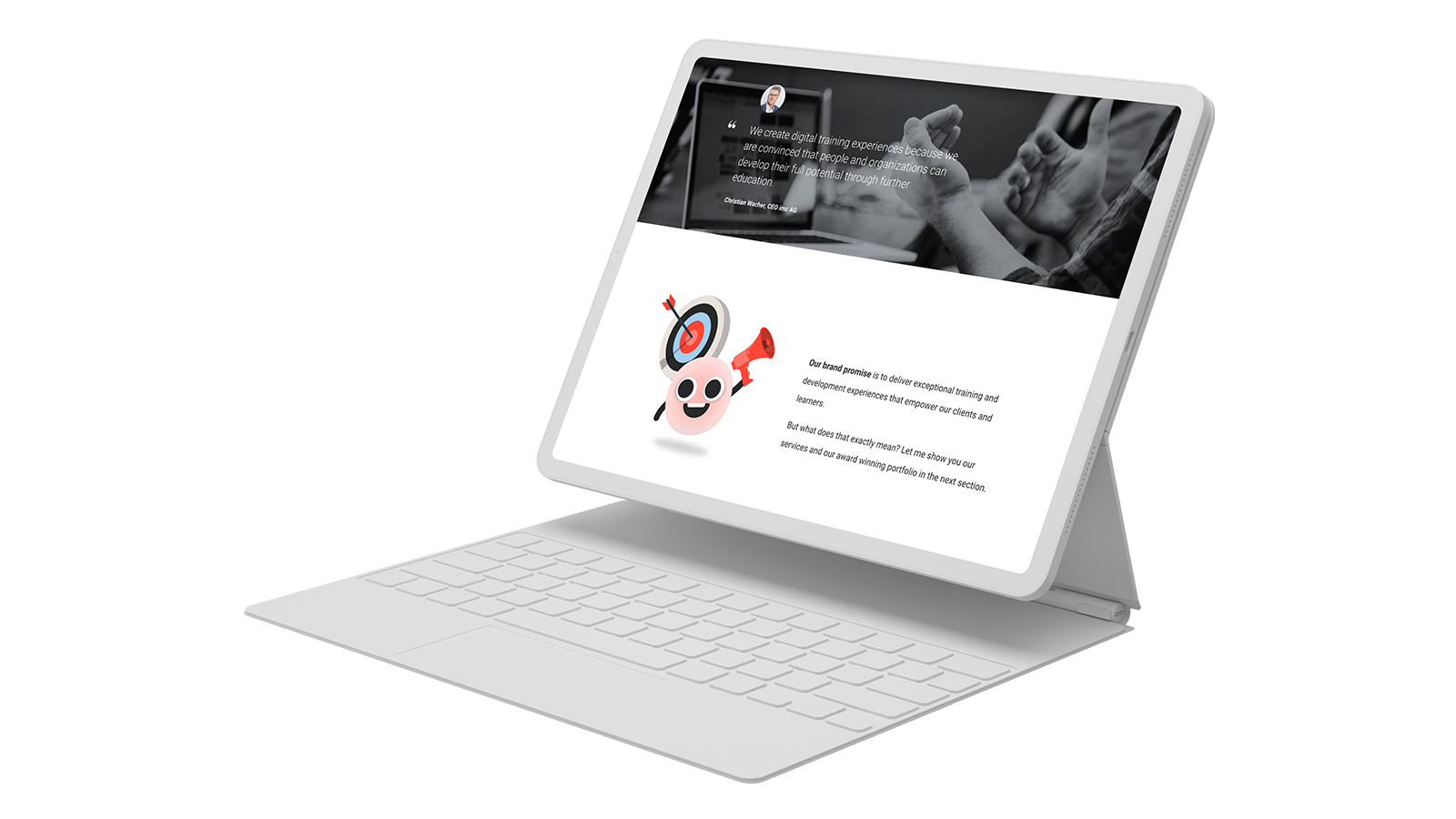
imc Brand Training
Rule #2: Genuine attachment transforms initial attraction into a full-blown relationship
A company’s fundamental values and culture are reflected in virtually everything it does and therefore need to be understood and actively supported by its employees. New hires, in particular, must be able to rapidly internalise what their new employer’s brand means and stands for. They applied for the job out of an initial attraction to the brand, and it is now up to the company to build that attraction into a genuine relationship.
A successful onboarding journey is vital to this because onboarding is the first step towards brand loyalty. For this reason, companies should proactively offer onboarding experiences that are consistent with and support their brand promises.
That’s why the completed brand training course at imc was specifically developed for our new onboarding journey and designed to fit into our onboarding storytelling. It also works as a stand-alone training course for established imc employees.

imc Brand Training
To ensure that new employees find it easy to get started and engage with our brand training, we have made it an integral part of our onboarding process. We have also incorporated it into our learning management system (LMS). To reach as many learners as possible, brand training must be easy to engage with, not take up too much time, and be accessible from any location and device.
Rule #3: Turn likes into love with emotional branding
Emotional branding is very powerful. It’s the art of connecting with people by tapping into their feelings. But how do you translate this emotional aspect into online training? One very effective approach is to use elements of branding that have high recognition – such as logos, brand visuals or mascots. You can generate very strong emotional appeal by incorporating these elements into storytelling as a way of communicating your brand message.
We (almost) always follow our own advice, so we chose storytelling for our own brand training course. The narrator is our mascot, Max.

Storytelling:
Storytelling is a communication method that uses narratives to convey information. It is widely used in knowledge management, child and adult education, journalism, psychotherapy, marketing, PR and advertising.
Max looks a little like a ghost and emerges from the dot on the “i” of imc. He starts out very pale but gradually takes on more colour as the learner progresses through the course and learns more about the imc brand.

imc Mascot Max
Max features in every module of the imc brand training course. For example, in one module, he reads from a book telling the story of the company’s founder, Professor August-Wilhelm Scheer. As the course progresses, the mascot pops up to provide background on various points or quizzes the learner on content they have just covered.
Rule #4: The right implementation is everything
In our case, the right tool for creating the brand training course was Articulate Rise. It allowed the team to get involved and help shape the course right from the outset. The necessary expertise in didactics and form was provided by our inhouse instructional designer Oliver Steinhilber. “Brand training courses are very much in demand from our customers at the moment,” he says. “Everyone’s looking at learning on topics like onboarding, change and new work, and the people responsible for it in HR, marketing and internal communications want to make sure their learning content is authentic and has emotional appeal.”
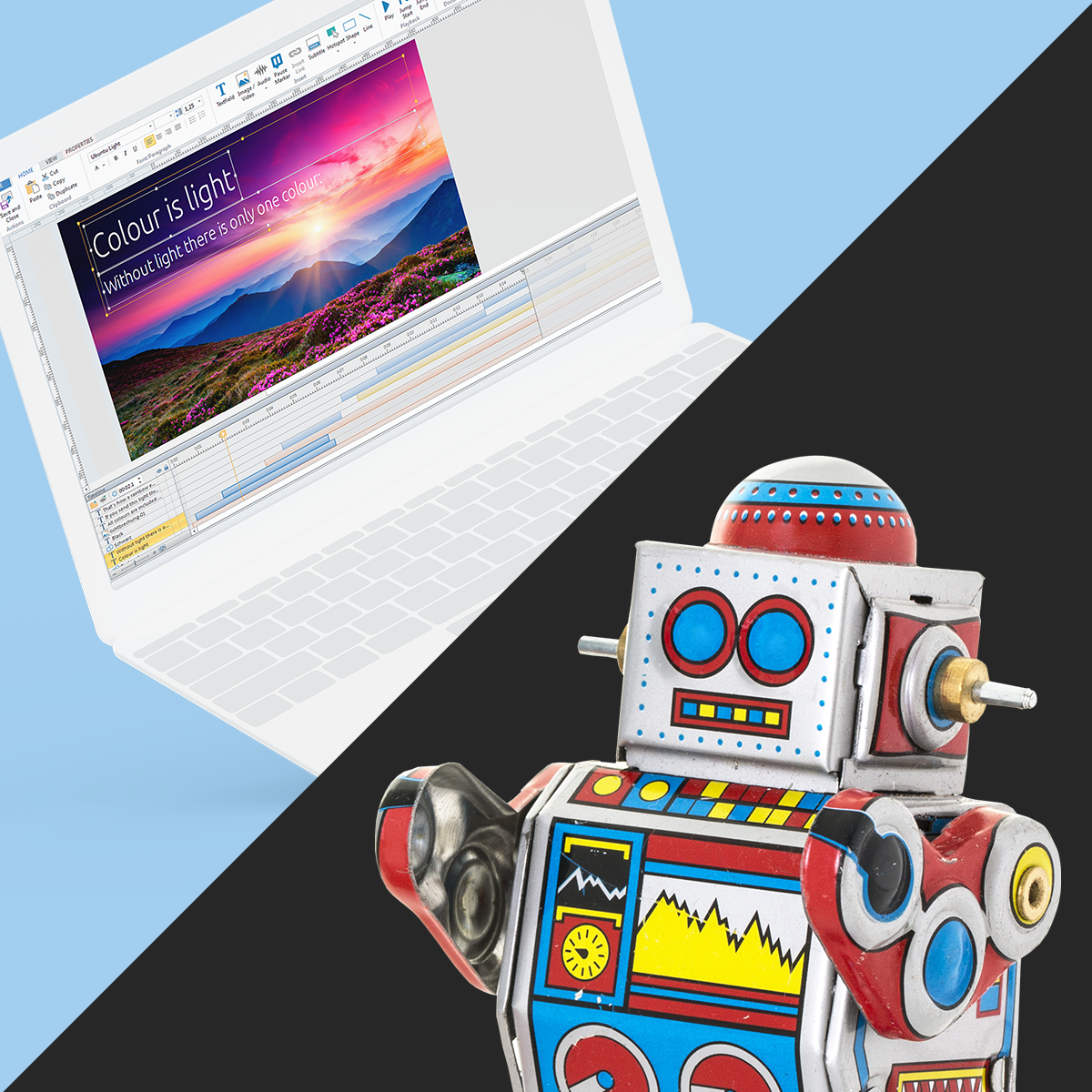
The Right Tool:
To be sure you’re using the right tool for creating your training course, it’s best to talk to an instructional designer first. Articulate Rise is a sophisticated software application that has a reasonably steep learning curve. For less experienced users, authoring tools like imc Express provide a quicker and easier way of getting started on generating content.
Why invest in emotionally intelligent brand training?
Simple: because brand training content with emotional appeal makes it easier for employees to identify with the brand. This sense of identification improves employee motivation and therefore has a direct effect on their day-to-day work. By using brand training content that has emotional appeal, a company can also create brand ambassadors from among its own ranks – employees who will champion the company brand to both internal and external audiences.
Deep understanding of shared company values and genuine buy-in to the company culture lead to better communication and collaboration, as imc Director of Brand Strategy Kerstin Steffen explains: “Brand training is effective if afterwards everyone feels confident they have chosen the right employer, and all learners feel positive and excited. Effective brand training turns employees into role models who are happy to be ambassadors for the company spirit and brand message.”

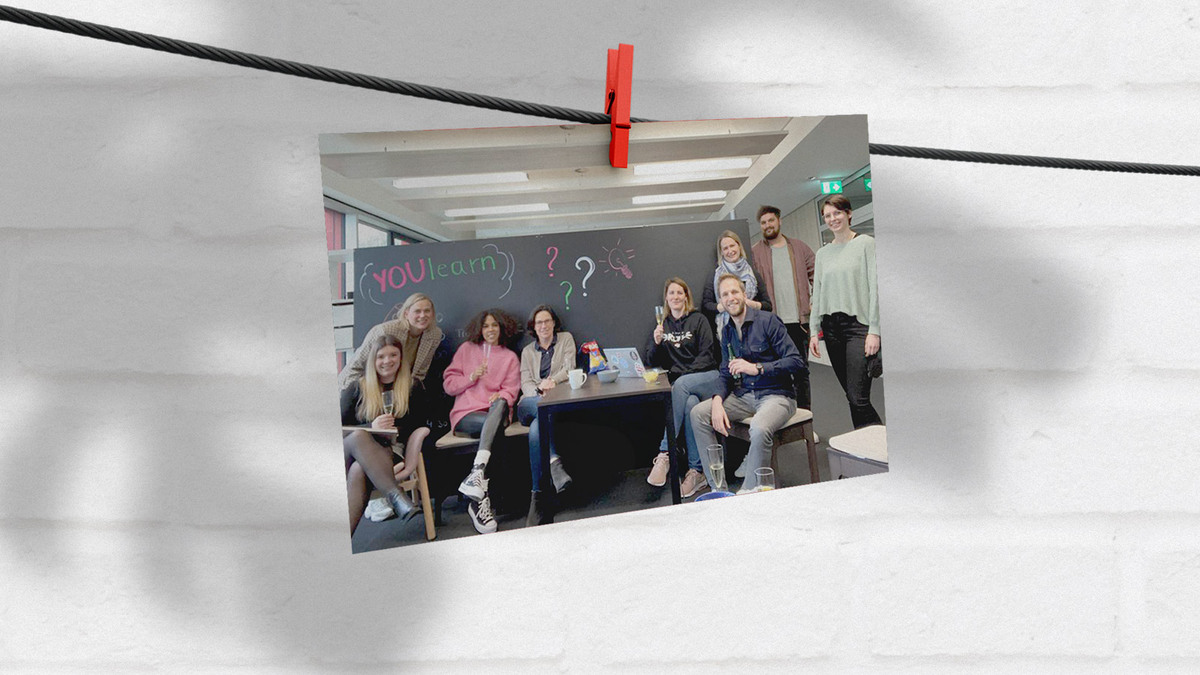
It’s all about Communication & Collaboration
Whether we work from home or from the office, hybrid working and global teams have fundamentally changed the way we work together at imc. So it's high time for us to ensure global communication and collaboration standards so that collaboration continues to work successfully.
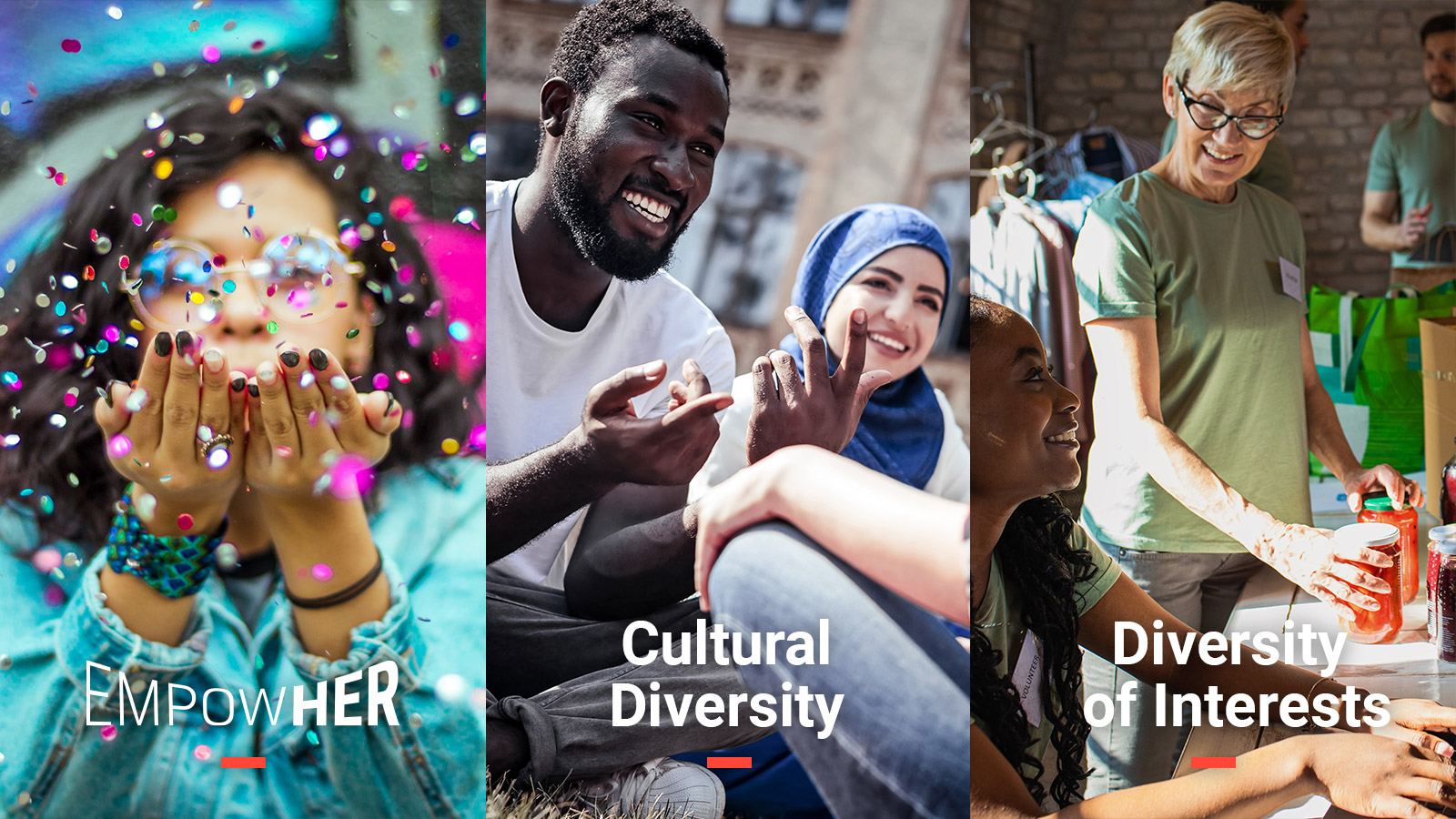
This year, the imc Diversity & Inclusion programme has even more to offer
Ilse Henne about role models: "If we feel seen, supported, connected and feel proud of other women in our community, then we can be happier and being happier is the best way starting to learn and develop yourself!"
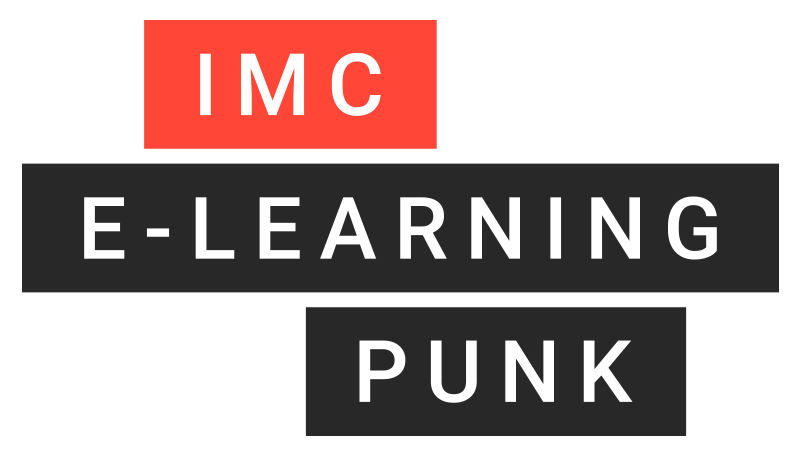
Contact person
I joined the imc newsroom team in 2021. As a journalist my heart beats for content and storytelling.
I’m excited to figure out how e-learing and digitization affect the future of work. My task is to create content to talk about and I’m always looking for trends.
Privately I love to travel and eat Tapas.
Topics: E-Learning Trends, Corporate Social Responsibility, Press and Influencer Relations

Tips for Using 2D Maps in e-learning
The many advantages of putting learning content into a map structure
Learning content should be inspiring, if not utterly captivating. Ideally, it should be branded and look cool. And it needs to be engaging for the video gamer generation, without alienating more conventional learners. That’s a lot of boxes for modern learning experiences to tick.
Consequently, many companies and organisations are turning to map-based training. Even so, it’s a fairly new area, and the e-learning applications of maps may not be immediately obvious, despite the ubiquity of Google Maps.
That’s why we have put together this article. It explains the difference between 2D and 3D maps and illustrates the structure and advantages of 2D map-based training.

Differences between 2D and 3D maps
Arguably the most important difference between 2D and 3D maps is the browser performance required. 3D maps are rendered live in the browser, so they require more computing power and a very stable network or internet connection. The upside is that 3D maps allow dynamic perspectives: users can switch perspectives within the map.
A 2D map does not allow dynamic perspectives, but the viewer can create the impression of changing perspective by moving relative to the map. This 2D principle is employed in many strategy games, for example. The map is based on images in which it is not possible to change perspectives. The advantage is that fairly large story/learning worlds can be shown without requiring a lot of browser performance.

2D animation
2D does not necessarily mean static. Within a 2D world, it is possible to have individual elements that are animated and dynamic. This is called 2D animation, and it lends life and vibrancy to 2D maps. It is even possible to integrate 3D graphics into 2D maps.
The introduction: arriving on the map
As with most learning experiences, it’s a good idea to start with an introduction. The introduction can appear or pop up on the map in the form of a chat window or a specially created page that briefly outlines the storyline and subject matter of the training session. It is advantageous here to explicitly tell the learner what the training task will involve, and what their objectives are. The benefit of showing an introduction directly on the map at the outset is that the learner does not need to leave the learning world and therefore does not lose focus.
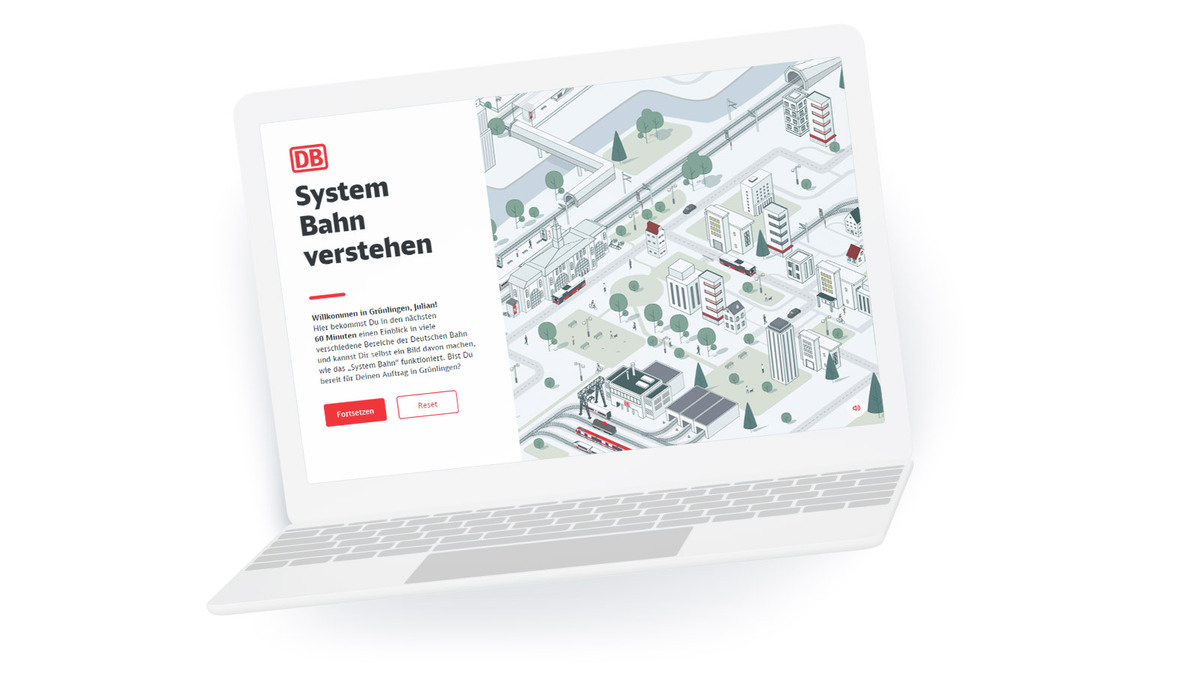
2D Map Training Deutsche Bahn
The main narrative: read the map
It is vital that the main part of the session is self-explanatory. This means the map must be intuitive to use. A certain degree of in-map guidance can be achieved by unlocking individual tasks step by step. That way, learners intuitively know the correct task order, without having to be explicitly told. Crucially, this approach allows learners to discover the learning content for themselves, i.e., exploratively. The navigation leads via the 2D map to various locations that the learner can ‘visit’. An example would be where the map shows a building that the learner can click on and enter in order to progress to the next task or access a learning nugget.
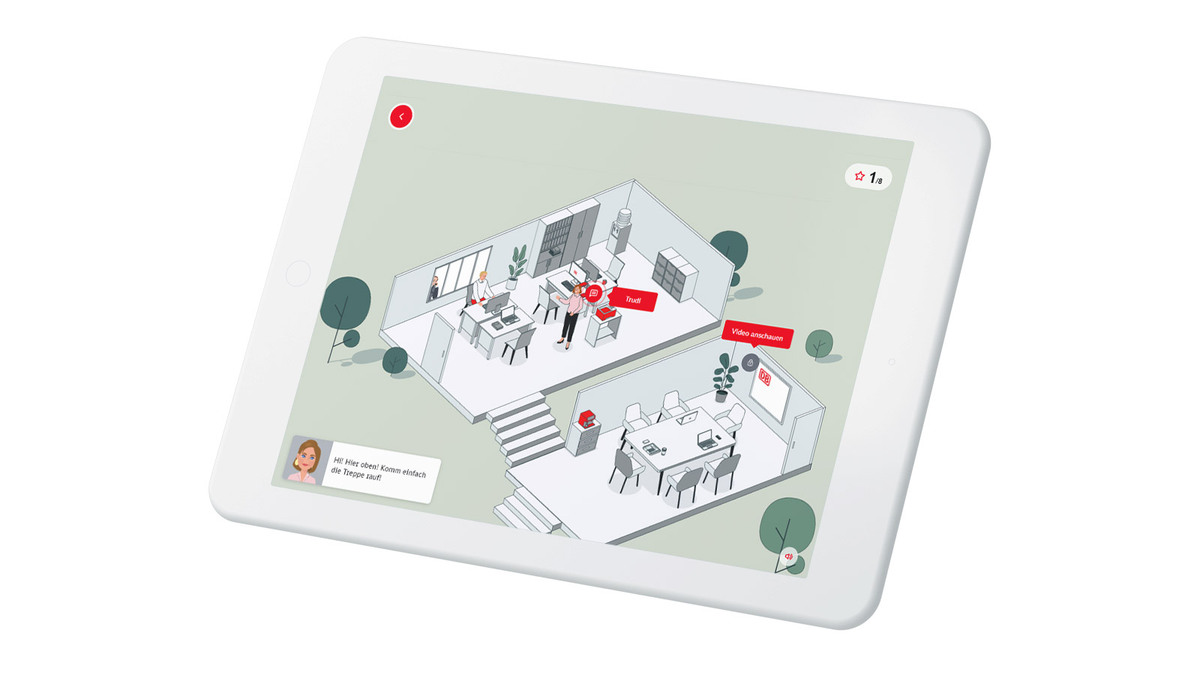
2D Map-Training Deutsche Bahn
Interstitial and achievement screens can be used to lend further structure to the main narrative by appearing as pop-ups overlaying the map. They can provide orientation by showing learners their next tasks, highlighting their progress, or making them aware of further options. The whole learning experience can be made even clearer by adding jump labels to individual locations on the map. These can be used to help the learner navigate from tasks to their associated learning content.
GOOD TO KNOW
Learners should not need to leave the map (the learning world) at any point. Everything they need in order to achieve their objectives should be contained within the map. This can be achieved, for example, by using chat windows that open directly on the map, or by showing learning nuggets, content items and hints as overlays on the map.
The conclusion: leave the map
In 2D maps, just as in other learning settings, it is important to clearly mark the conclusion of learning units and tasks so that learners know they have successfully completed the section in question or indeed the entire training session. There are many different ways of doing this. The key is to ensure the method chosen fits with the training session’s overall storyline. For example, you can use a list of checkpoints which is then displayed at the end with all tasks checked off. Or you can show a notification in the chat window.

Success message at the end of a training session
Questions?
Can a map-based training session also be short?
To retain the map’s explorative dimension while at the same time creating a training session that can be completed within a short space of time, you can reduce the amount of learning content, streamline the user experience, or confine exploration strictly to key locations on the map. The main thing is to maintain excitement while keeping the learning purposeful.
How gamified can a map-based training session be?
The primary focus must be on the learner experience, so the map should not contain any unnecessary actions or locations.
Surely map-based training sessions are very labour-intensive to produce?
Not necessarily. The total overhead can actually be relatively low, as the world created by a 2D map makes a relatively large contribution to creating an exciting learning experience. It is possible to reduce the design overhead that goes into learning nuggets/subpages by integrating them into a 2D map.
But isn’t that really expensive?
The 2D map format does not necessarily require more design work by our experts, so it is a very good alternative to 3D maps, even for limited budgets.
What are the other advantages over 3D maps?
Good performance, low overhead, faster page loading.

Rapid Content Development
We want things now: fast food, coffee to go, messenger services, online shopping … we no longer have time. Companies have also clocked onto this trend, and want to stay up to date with their training courses.

Gamification takes corporate learning to a new level
The fact that Game Based Learning works as a motivational booster for e-learning is already rooted in childhood. We have summarized the most common types of games and practical examples for you.

Contact person
I joined the imc newsroom team in 2021. As a journalist my heart beats for content and storytelling.
I’m excited to figure out how e-learing and digitization affect the future of work. My task is to create content to talk about and I’m always looking for trends.
Privately I love to travel and eat Tapas.
Topics: E-Learning Trends, Corporate Social Responsibility, Press and Influencer Relations
Learning culture nourishes learning ecosystems
Why learning ecosystems need more time and room
When employees are looking for suitable learning resources, they can often choose from a wide range of contents and formats. This can often make finding learning content that meets the specific requirements time-consuming and inefficient.
Technology can solve this issue. A learning ecosystem links several learning platforms and presents the formats and contents clearly in the learning portal.
Many organisations already utilise learning ecosystems, especially larger companies. A learning management system (LMS) often serves as the foundation. This becomes an ecosystem with the integration of additional platforms and tools, such that both internal and external sources feed into search results.
But what good does a solution based on the most advanced technology do, if it is not well received by the learners? User acceptance relies on a corporate or organisational learning culture that is fit for the future.

“In future, personal and professional development will go hand in hand”
It is not the addition of content that makes a learning ecosystem grow, but its expansion through tools and systems. Fundamentally, that means opening up the LMS and integrating external platforms with external content to create a basis for the development of an ecosystem. Yet, that takes courage!
What happens when companies take the leap and hand over control of their learning system? “Responsibility is transferred to the employees,” says Sven R. Becker, Member of the imc Executive Board. “Thus far, the senior management typically dictates corporate learning, which gives it a regulatory character. Yet, experience shows that the company’s success depends on how much learners are involved. A learning culture transformation has to start with the workforce and grow from there. That requires a mindset shift but should be the clear goal.”

Customised learning paths can be a solution when implementing this, as they help to address personal requirements in a more targeted manner: “In future, personal and professional development will go hand in hand. Different learning systems and achievements must be recorded and stored automatically,” says Andreas Pohl, Director Research and Development at imc. “That facilitates the creation of tailored, custom learner profiles which enable learning across the boundaries of a specific organisation.”
Acceptance and motivation are the first step
“No appointments today – I’m learning.” Is it possible to write that without earning funny looks? Making it possible is a key task for modern companies. Learning and professional development must lose the “necessary evil” or “seminar as a benefit” labels and be anchored as a vital component of corporate culture. One option is to specify professional

Good content can boost the motivation to actually use a learning ecosystem. Sven R. Becker explains: “One trend that is clearly set to stay is gamification. Yet, that alone is no longer enough to win over the new generation of talents. Engaging activities and formats are needed. Getting the mix right is important. A good, blended learning experience is marked by variety – it offers something different. Great stories are remembered and motivate the learner to continue.”
Employees need time and room for creativity to leverage a learning ecosystem
Companies like Microsoft already utilise learning days, learning time, and learning sabbaticals – with great effect. Similarly, the appointment of learning ambassadors has proven successful for several customers of ours. In the automotive sector, some companies have transformation guides who are trusted by their colleagues, putting them in a position to help create awareness for professional development.

Sven R. Becker firmly believes that the strongest ambassador for any measure is the person most critical of it: “If you succeed in changing the view of the strongest opponent, you gain the greatest multiplicator in the company.” Several imc customers have achieved great successes with the learning ambassador model, says Becker.
Learning that is independent of location and time constraints also makes it easier to access the system. That is why it should be equally available from mobile devices and from the workplace.
User generated content – Quick and easy, from creation to publication
An ecosystem keeps growing continuously. Authoring tools are a great option for adding content and knowledge straight from the in-house expertise, as they allow any user to share their know-how.
This turns the learner into a purveyor of knowledge. In that role, they assume responsibility within the system – which will also boost their own motivation.

The technology already provides for this. All that is left to do is to get the learners’ buy in. While that may seem like a monumental task, these initial key steps will get your company on the right track:
- Take the leap and expand your learning ecosystem
- Create acceptance for professional development
- Create a great learning experience with motivating content
- Offer time for learning
- Enable employees to help shape the learning experience
- Not trying is the biggest mistake you can make!

Learning Ecosystems: A Universe of Learning
If you want to use a learning ecosystem successfully in corporate learning, the technical requirements must be right. Time to shed light on what systems have to fulfil in order to be able to meaningfully map a genuine learning ecosystem.

Future of Work: Interview with Çiğdem Uzunoğlu
Competence transfer thanks to digital games? It's possible! In an interview with Çiğdem Uzunoğlu, we explain how computer games and continuing education fit together and how they can be used effectively.

Contact person
I joined the imc newsroom team in 2021. As a journalist my heart beats for content and storytelling.
I’m excited to figure out how e-learing and digitization affect the future of work.
My task is to create content to talk about and I’m always looking for trends.
Privately I love to travel and eat Tapas.
Topics: E-Learning Trends, Corporate Social Responsibility, Press and Influencer Relations, New Work

This year’s e-learning content trends
Interview with Falk Hegewald, Director E-Learning at imc
Out with the old, in with the new. A new year brings new content trends that nobody involved in corporate learning can afford to ignore. Together with Falk Hegewald, Director E-Learning at imc, we are taking a look at the coming year’s crucial topics for companies.

INFO
Falk Hegewald started out in design: He studied graphic design and followed that up with game design. But when imc introduced him to the e-learning sector nine years ago, he decided to stay put. “Back then, I was attracted to the idea of creating something new in this world of e-learning. It was all still very 1990s in those days,” says Hegewald. At imc, he is responsible for custom and off-the-shelf content worldwide.

Now, we’re really getting started: 3D, VR and Metaverse
Falk Hegewald is confident that the upcoming big changes are here to stay – well beyond 2022. Many major corporations are driving the development of virtual reality and metaverse. Nike recently acquired a design studio that “produces” NFTs and virtual running shoes.
“The key driver for metaverse is to create a world where you can play. However, that world will also feature workspaces. We are already entering that world with virtual meeting rooms,” Hegewald explains. “At imc, we are taking that as an incentive to develop the 3D aspects of our content to gain a head start in the creation of such digital worlds and environments.”

INFO
Metaverse:
Metaverse describes an immense collective virtual space formed when real and virtual worlds merge. A metaverse comprises both open and closed platforms. Companies can create their own worlds as well as digital products, and even sell them there – just like in the real world.
Engaging content and adaptive learning
This year will also see a strong focus on more engaging content that both motivates and captivates the learner. Not everything needs to be a game, Falk Hegewald claims: “You can also use novel engaging activities and formats. There is already demand for inspiring training, as companies have realised that they need to get more buy-in from their employees. As a premium content provider, we can deliver that.”
Adaptive learning will also be very relevant for content in the year ahead. In the past, the focus was on learning management systems featuring intelligent interfaces that facilitate appropriate distribution of training courses. Now, we are moving towards skill management through content. Falk Hegewald is confident that adaptive e-learning content will be in demand this year. “You rarely need everyone to learn everything. Employees with different levels of knowledge attend the same training course. Testing prior knowledge and leveraging suitable tools to assign content becomes a whole lot easier if the content is adaptive, too.”

Adaptive learning
Premium off-the-shelf content will be big next year
Last year, Falk Hegewald was particularly excited about the "Cyber Crime Time"awareness game, which deals with IT security issues by letting the learner take on the role of a hacker. Step by step, they learn the most common cyber-attacks first hand. “This goes well beyond your typical off-the-shelf content, be that from us or from our competitors. We wanted to create something that gets the employees’ attention.”
Yet, that was only the first step: This year, Cyber Crime Time will be expanded to include additional training courses and learning nuggets – smaller learning units. “Our aim is to create an entire training world for IT security so Cyber Crime Time remains exciting for our customers,” Hegewald explains.
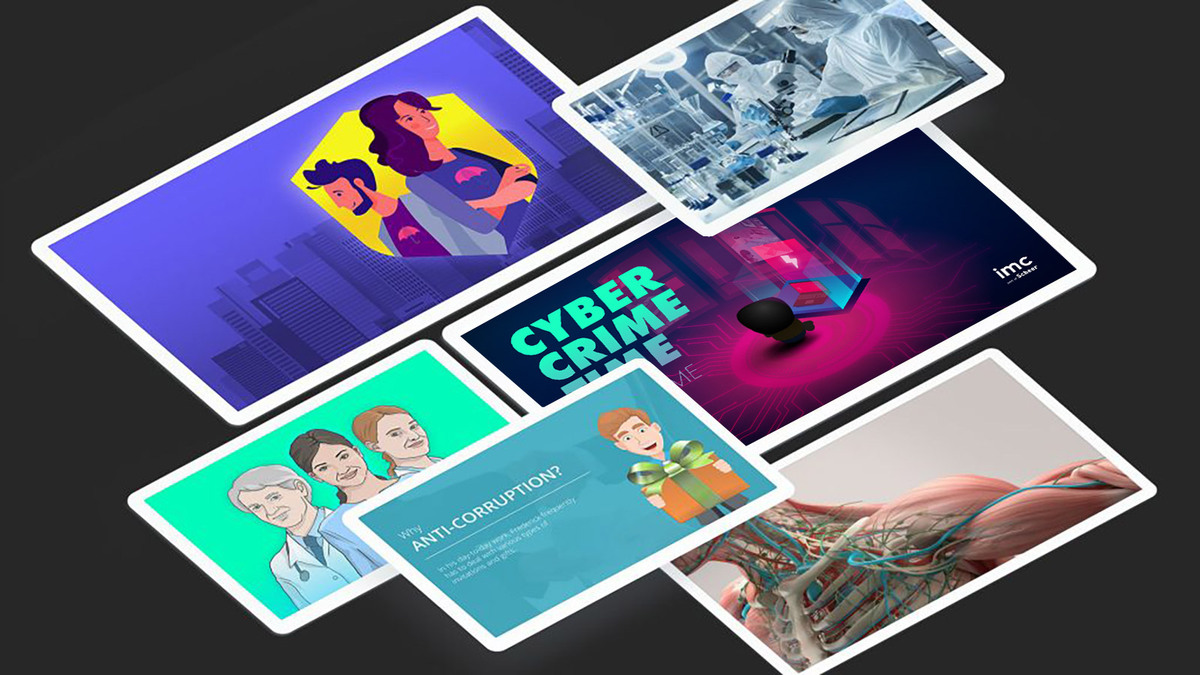
Premium Standard Content of imc
Falk Hegewald’s department also had their hands full designing custom content for corporate clients throughout 2021: They created a wide range of complex learning content, as well as complete digital learning journeys – covering everything from onboarding through corporate strategy to exciting sales training for customers like Jägermeister. “Generally speaking, many of our customers were more daring in their content design and presentation this past year. We love that trend and believe there is room for even bolder creative moves in the stories and the design,” says Hegewald.

The Jägermeister Master Academy
The war for talents goes into the next round
Companies are forever looking to attract talents and retain them long-term. The right onboarding and employee development are playing an ever-greater role in this quest.
To feed into that ambition, it is important that professional development content is up-to-date and dynamic. Falk Hegewald explains: “Young talents joining the job market are used to a different pace, they use media in a totally different way. It can become very challenging for a company to keep them engaged.”
That is why a key aspect will be to make onboarding and professional development courses accessible on all devices, enabling the latest generation of employees to learn anytime and anywhere.
As Head of the Division, Falk Hegewald always gets excited when new colleagues bring fresh and interesting ideas, as is often the case when they join straight out of university. “This type of inspiration is vital. As a content department, we always need to keep an open mind for new ideas.”

As Content Director, what are you looking forward to this year?
“Exciting new customers and new client projects. Personally, I would really like to visit the other imc locations again and meet the employees I have not yet had any personal contact with.”
Well, here in Saarbrücken, we are looking forward to meeting you, Falk!

Gamification takes corporate learning to a new level
The fact that game-based learning works as a motivational booster for e-learning is already anchored in childhood. We have summarised the most common types of games and practical examples of possible applications for you.
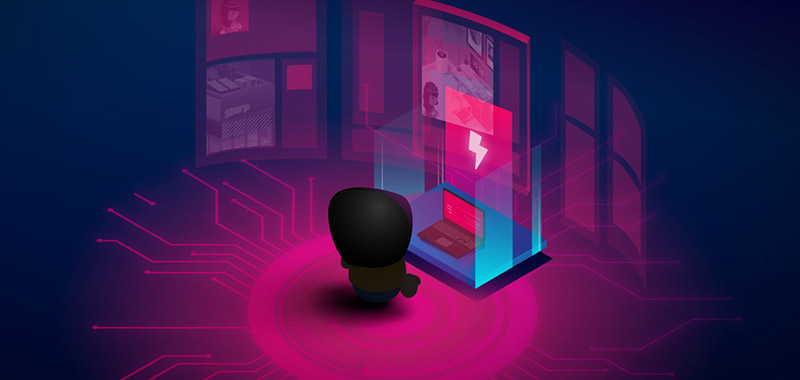
Awareness trainings are the key to success in the prevention of cyber attacks
Cybercrime is on the rise. It is no longer just a handful of criminal hackers who want our data and, unfortunately, our money. Learn in this article how awareness training can improve your IT security.

Contact person
I joined the imc newsroom team in 2021. As a journalist my heart beats for content and storytelling.
I’m excited to figure out how e-learing and digitization affect the future of work. My task is to create content to talk about and I’m always looking for trends.
Privately I love to travel and eat Tapas.
Topics: E-Learning Trends, Corporate Social Responsibility, Press and Influencer Relations

Digital competences on the web
"The young people all know how to use the internet!" That's how many people think about Generation Z. Also known as digital natives, this generation grows up with the internet and is already confronted with the digital flow of information at an early age. Smartphone, tablet and computer are part of everyday life and lead quickly to WhatsApp, Instagram & Co. Mobile devices and the internet are also becoming increasingly relevant in digital or hybrid teaching. But does an active use of digital media and the internet also mean a versed usage? Because even if the younger generation don't know a world without new technologies, not all of them pay attention to a responsible use of them.
Pupils should therefore have various competences in order to be able to work confidently with digital media in class and to move safely on the web.
A survey on the use and handling of the internet showed the following:
12- to 19-year-olds:
- 89% use internet daily
14-24 year olds:
- 31% said their internet skills were very good
- 62% said that for them personally, infecting their computer or other devices with malware is one of the biggest risks of using the internet
The digital world presents opportunities and risks that students must learn to deal with responsibly. Teachers should therefore pay attention to teaching these skills in order to make online lessons as safe as possible.
We have summarised the most important competences that students should be aware of in an infographic, which you can also download for free at the very bottom.

Infographik of the Month: Digital competences on the web – What competences are necessary for pupils to be able to move in a self-determined way in the digital world?
Download and further information
The info graphic you can download for free as PDF.

The Future of Learning & Education
In this episode we take a look at how digitalization effects both Child and Adult education.
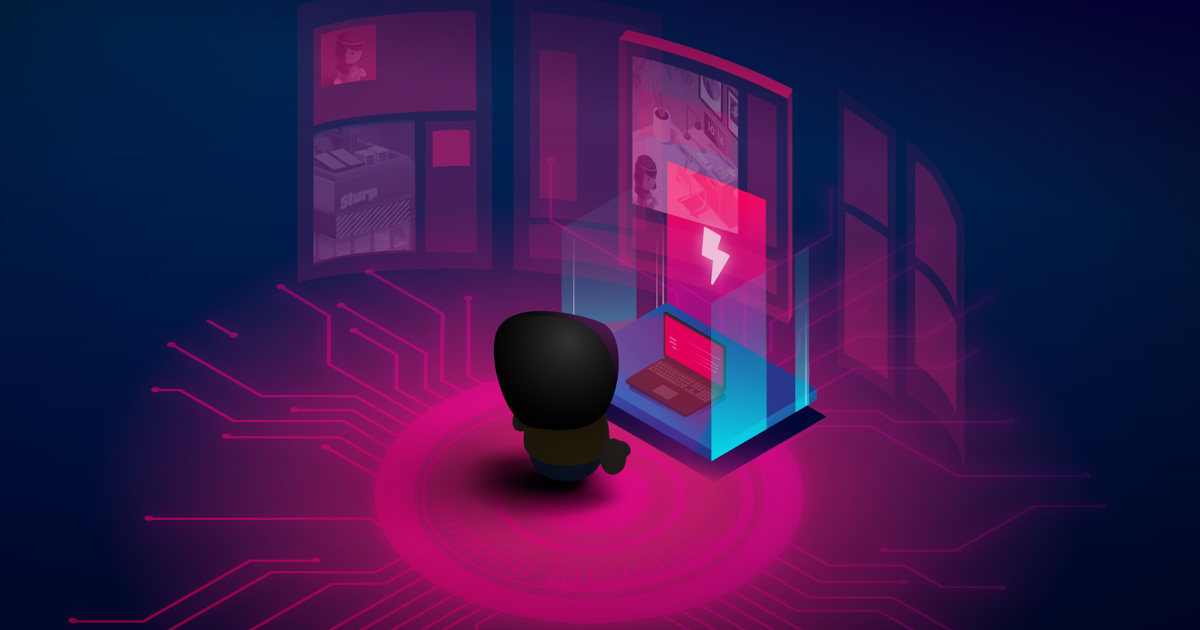
Cyber Crime Time – The game
Stay one step ahead of cyber threats: learn the most common cyber attack techniques in our new awareness training.
Contact person
I have been working in the Marketing & Communication Team at imc since March 2019.
Communication, creative content and social media are my passion. "KISS - Keep it short and simple" is my credo.
To explain complex content in an understandable way and thus make the topic of e-Learning accessible to everyone is an exciting challenge every day.
Privately I love to read, play poker and travel a lot.
I am always happy to receive feedback or suggestions.

Learning ecosystem: A universe of Learning – why you need it, how you build it
Discovering new worlds of corporate learning
The L&D sector has largely reached a consensus: Customisation must play a bigger role in corporate learning. We must strive to democratise knowledge. The panacea needed to achieve these ambitious goals? A learning ecosystem. The focus is almost exclusively on soft factors related to the corporate and learning culture when establishing such a system, neglecting technological aspects.
Yet, suitable software such as a learning management system or learning experience portal is vital. Let’s take a step back to grasp what a system needs to achieve to map a meaningful learning ecosystem.
Inflexible systems and uniform learning paths for all employees are a thing of the past. Nowadays, companies face the challenge of creating a learning ecosystem that promotes self-directed corporate learning in the long term.
Such a system links various platforms and creates a clear structure for the different formats within a learning portal. The search function leverages all integrated systems, taking account of both internal and external sources.

Andreas Pohl, Director Research & Development at imc
So much to the theory. The question now is: What technical structure enables a learning ecosystem to meet all requirements and offer real benefits to the employees?
What role does a learning management system (LMS) or learning experience portal (LXP) play within such learning universe?
imc expert Andreas Pohl, Director Research & Development, leads the development of such systems. Thanks to his many years of experience, he is very aware of the hidden potential learning ecosystems offer.

Hello Andreas! What would a learning ecosystem look like in practice? Can you give us a specific example?
Let’s say we have an industrial client who manufactures special parts for large-scale equipment. All new employees and trainees must know how to use the equipment employed to make these parts.
They train on a training machine to learn the workflow. Now, it is possible to link this training machine to a learning management system (LMS). In that case, a new employee could log into the training machine with their personal identifier. Once they have mastered the workflow, the machine automatically transmits the training success to the LMS where the training is marked as complete.
This is then booked in the employee’s learning path or as learning progress – for instance, as part of their on-the-job training. Thus, the communication between the different systems makes learning easier. This example might be a little staged, but I think it illustrated the practical application of a learning ecosystem very well.
What does a learning ecosystem need to do to make learners use them?
Before you start thinking about a learning ecosystem, a suitable cultural framework must be in place.
As an employer, I need to motivate employees to use a system and allocate time for that purpose. At the same time, the user experience of the learning ecosystem (LE) must be structured in such a way that the employees enjoy using it, and make it easy for them to find relevant content.
A user will be far more likely to use the system when they can see an immediate and direct benefit. If that benefit is not obvious, you have lost.
How do you realise that from a technical perspective?
There are two approaches: First of all, I can make the LMS or LXP the central hub for my learning ecosystem. In this case, the LMS also needs to be able to present contents from external sources.
The learner can find materials from the entirety of the ecosystem through the frontend of the LMS. It makes no difference to them where learning content is stored – in the company LMS or, for instance, an integrated content library. For the learners, it is important that the system is easy to navigate and that they can quickly find relevant contents without jumping through hoops. Whether or not this takes them into a different system is irrelevant.
The second approach is to subordinate the LMS to the overarching portal. Rather than being at the centre itself, it delivers its results to the top level. This is useful when a central portal already exists and the LMS is integrated at a later stage.
How does an LMS become part of a learning ecosystem? What are the prerequisites?
In the second case – when the LMS is a cog in the wheel – the contents must be supplied to the overarching system. Indexing then becomes a major factor. That means that content must be provided in a format that triggers useful search hits presented and shown in a meaningful manner. The same applies to recommendations the system gives the user based on learning habits or interests.
Good APIs (application programming interfaces) are the key success factor for these types of functions. They facilitate the communication between the different applications. Effective and standardised interfaces are always important in IT, but whenever several systems come together, they become absolutely crucial.

How does an increase in content affect the individual interfaces and components?
This is a very interesting question. Let’s break it up into two parts. To illustrate: Your universe might grow because the number of planets is increasing, or because the existing planets are becoming more populated. These are two very different scenarios.
Similarly, you can expand your learning ecosystem by integrating or linking new components, or by adding more content to the existing elements.
After all, the purpose of a learning ecosystem is to continuously and frequently change the volume of the learning content, and the integration of user-generated content (UGC). Going back to our analogy, user-generated content merely increases population density on a given planet. From a technical perspective, this is not a critical process, as the growth takes place within an existing system with no effect on the complexity of that system. It would therefore not qualify as a true expansion.
So, what is “true” expansion? What do we have to watch out for?
I would say a true expansion of the ecosystem involves the integration of additional systems or a new interface. This expansion process is somewhat slower, as each new system needs new interfaces or gateways.
Each “planet” needs to provide the information within the LMS to the other “planets” – and ultimately the user – through standardised interfaces, and various APIs as well as an event bus are utilised for this purpose. Meanwhile, the central system must be able to absorb content and integrate it in its search function to make it accessible to its users.

How does the system know which content should be shown?
The system can only show content it knows. That means either the index content must be transmitted to the system – for example, via a data or event bus – or the system must have direct access to the index. Naturally, this can only work if indices are properly maintained and clearly structured.
What role does the data or event bus play?
An event bus is basically a messaging system. One system throws a message onto the bus, the bus takes off, and the next system can retrieve the message.
The message does not disappear after it is retrieved by one system – it remains available for the other systems. For example, systems A, B and C “take” the message, but system D ignores it, because it’s not relevant to it. Meanwhile, system D might “take” a different message that A, B and C are not interested in. Messages are thus distributed in real time, making manual message transfer to each system redundant (publisher-subscriber approach).
The challenge with this approach is that each system involved must be able to understand the message contents. This often requires some adjustments, as some systems might not be able to translate it directly. This is a major current topic for our development team.
What trends would you say can make learning ecosystems even better?
There is certainly room for improvement in system alignment, which also encompasses IoT (internet of things) and ESB (enterprise service buses). In other words, systems need to know both, which message they need to retrieve from the bus and which immediate adjustments they need to make.
This reduces the need for system adjustment. Now, an ESB is not a trivial thing, and might be overkill for a straightforward set-up with a small number of systems. However, my learning ecosystem is fairly complex and serves more than 10,000 employees, it makes an enormous difference.
Another thing we are working on at the moment is switching over to external contents. Right now, we can integrate external content in the search through our LMS, for example, through the LinkedIn Learning Content Importer. We want to expand that capability to enable the user to switch directly into the external system. We are currently collaborating with a major client to achieve that.
Finally, what should we pay particular attention to? Where do you see the most potential? Are there also disadvantages?
It comes at a cost. None of this is free. Everything we talked about needs investment. The systems need to be maintained continuously, as do the connections to the interfaces, and some of these systems might be proprietary. It’s not an automated process.
Ideally, that will enable me to create a learning ecosystem which optimises how the different needs of all my learners are met. Everything then comes from a single source, which is a whole lot more user friendly and actually feels like one system. A good learning ecosystem goes a long way towards improving the learner experience and providing real support to employees in their daily work.
My advice: Good planning is half the battle! It is important to clarify from the outset what you want to achieve, how many systems should be maintained and how much maintenance can be provided.

How not to break bad with validated processes in an LMS
What requirements must an LMS map for validated processes? And how does Breaking Bad fit here? Questions about questions not only the Pharmaceutical industry should think about.

Learning Analytics: It comes down to the right questions
Learning must not be an end in itself, but fit in the company’s business outcome: More and more managers are demanding this. We therefore looked at how L&D managers can meet this requirement with the help of Learning Analytics.

More about our LMS
If you would like to learn more about imc's Learning Management System, check here for more information.
Contact person
I have been working in the Marketing & Communication Team at imc since March 2019.
Communication, creative content and social media are my passion. "KISS - Keep it short and simple" is my credo.
To explain complex content in an understandable way and thus make the topic of e-Learning accessible to everyone is an exciting challenge every day.
Privately I love to read, play poker and travel a lot.
I am always happy to receive feedback or suggestions.

Learning Management Systems in schools
The frequency of using a learning management system (LMS) has increased significantly compared to the time before the Corona Pandemic. There are many ways to use an LMS, but the questions arise: Which functions are really important? What should schools look for when introducing an LMS? We have summarised the most useful functions.
The use of learning management systems (LMS) was pushed forward mainly because of the Corona Pandemic and since then many schools cannot imagine teaching without them.
A survey showed the frequency of the use of learning management systems in the classroom.
Evaluation before Corona
- 9.3% used in most lessons
- 29.9% used in some lessons
- 63.7% never used
Current evaluation:
- 38.9% used in most hours
- 19.1% used in some hours
- 42.7% never used
Learning platforms enable digital exchange between teachers and learners, promote self-directed learning by students and facilitate the provision of teaching materials. But not all LMSs are the same.
Learning platforms differ in terms of their complexity and functions. You should therefore consider in advance which criteria the learning platform in your school should fulfil and for which tasks it should be used.
We have summarised the most useful functions that every learning platform in a school should fulfil, in an infographic, which you can also download free of charge at the very bottom.
If you would like to know which of these functions the imc Learning Management System for schools fulfils, please contact us.
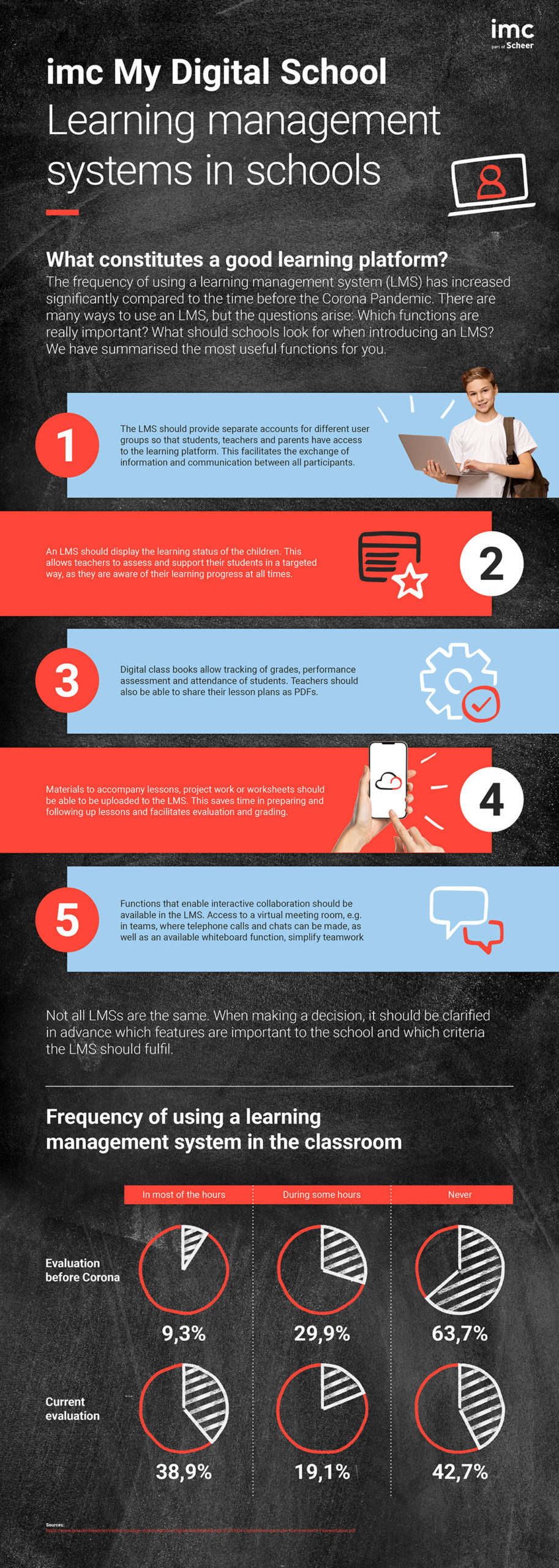
Infographik of the Month: Learning management systems in schools – What constitutes a good learning platform?
Download and further information
The info graphic you can download for free as PDF.

The Future of Learning & Education
In this episode we take a look at how digitalization effects both Child and Adult education.

Courage to the LMS!
In an interview, Christian Mai from S&G, reports on his experiences with the implementation, gives practical tips and explains why an LMS can even increase the appreciation of employees within the company.
Contact person
I have been working in the Marketing & Communication Team at imc since March 2019.
Communication, creative content and social media are my passion. "KISS - Keep it short and simple" is my credo.
To explain complex content in an understandable way and thus make the topic of e-Learning accessible to everyone is an exciting challenge every day.
Privately I love to read, play poker and travel a lot.
I am always happy to receive feedback or suggestions.

Six vital modules for every digital onboarding concept
A blueprint for efficient onboarding with lasting impact
Different companies have different requirements for their onboarding process. They might want to use modular and future-proof concepts, achieve cost and time savings compared to current approaches, or enable employees to start working sooner. Moreover, the pandemic has accelerated the need for digital onboarding as face-to-face training has not been possible. Despite the pandemic introducing more relaxed, remote working arrangements, hybrid work arrangements will become the norm; hence digital onboarding will become the tool to deliver a great first experience to new employees.
Yet, companies are not the only stakeholders – Employees have their own expectations of the onboarding process. This is why many HR managers are deciding on learner-centric onboarding that revolves around the needs of new employees:
“I want to know what makes my company tick,” – “I want to feel like I’m becoming part of the community,” – “I want to improve my skills.”
To achieve that, your onboarding needs a framework that provides guidance and an emotional connection while assessing the current state of knowledge and developing expertise.
This article explains how to design an exciting and creative digital onboarding process with new and existing e-learning content, even without a learning management system (LMS).

An illustration of the key building blocks
Our experts are always developing concepts suitable for a wide range of requirements. Get a head start with our “best of” compilation. Let’s imagine this situation: You want to digitise five days of basic training that has always been conducted on site. You are looking at a very diverse group of participants. The target group for this training extends beyond new colleagues, and also includes “old hands,” as well as some external service providers. They each have a different level of prior knowledge, different hardware, and different levels of access to a learning management system (LMS). Some might not have any access at all.
How do you satisfy them all? The solution is to design a structured framework for digital onboarding. Our experts recommend getting a head start with these 6 modules:
- A central (digital) starting point
- A daily virtual kick-off
- The self-learning phase
- A virtual hands-on workshop
- The online quiz
- A learning diary
Together, these six modules form a foundation. Let’s look at each element separately.
My Digital Onboarding Kit – The modules in detail
The central starting point could, for example, be a browser-based landing page created especially for onboarding, a homepage in the company intranet, a portal page (in the LMS) or an interactive PDF. It is important that the employees can see at a glance what is on the agenda for the day when they arrive for their onboarding. Think of it as a modern timetable. Every new employee needs structure, and an overview page is an easy way to provide that.
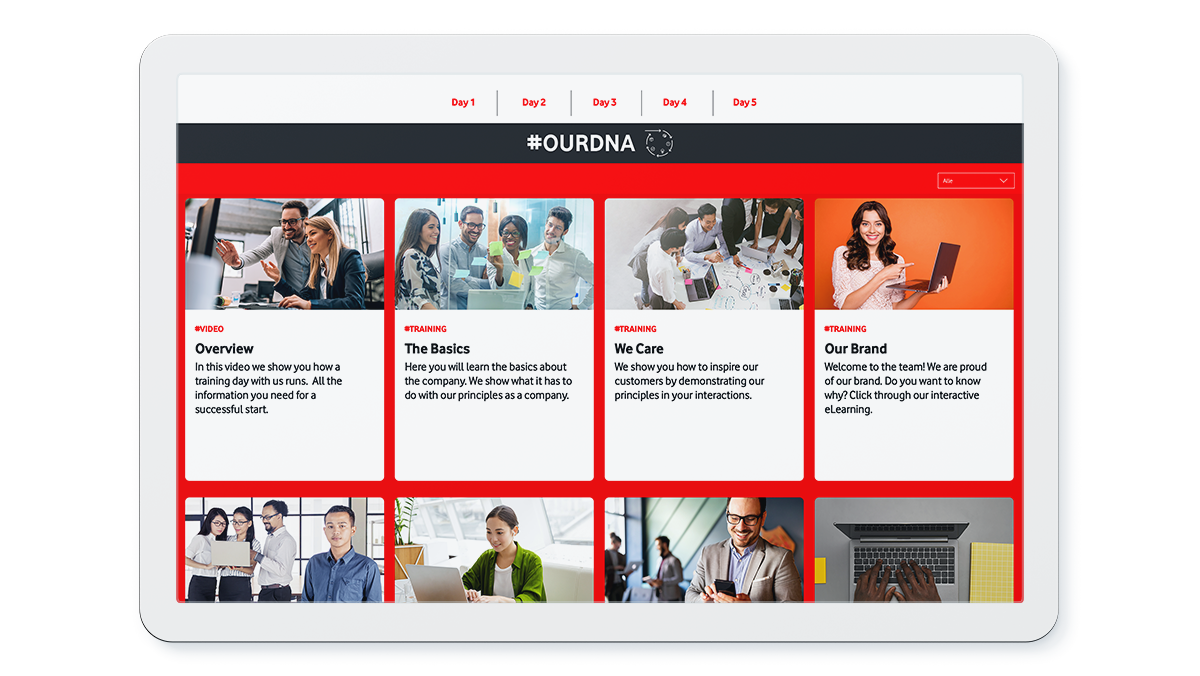
Portal page as central starting point
The virtual kick-off at the beginning of each training day serves to agree and discuss the agenda and objectives for the day together with the trainers. The focus should be on social onboarding, on promoting interaction between the participants. Our experts recommend a playful warm-up with surveys, icebreakers, or activation games aka energisers. Why not play a round of “I packed my bag” to get started? It is helpful to establish a meeting netiquette, specifying that cameras and microphones must be switched on.

virtual kick-off
In the self-learning phase, each learning format achieves a specific objective. For example, digital performance cards help employees gain knowledge with a certain focus, and then apply it in simulations as part of web-based training. Virtual scavenger hunts help them familiarise themselves with the company or the intranet. Companies can also integrate existing training courses or offer individually tailored or branded content. Variation between different e-learning formats has proven particularly effective.
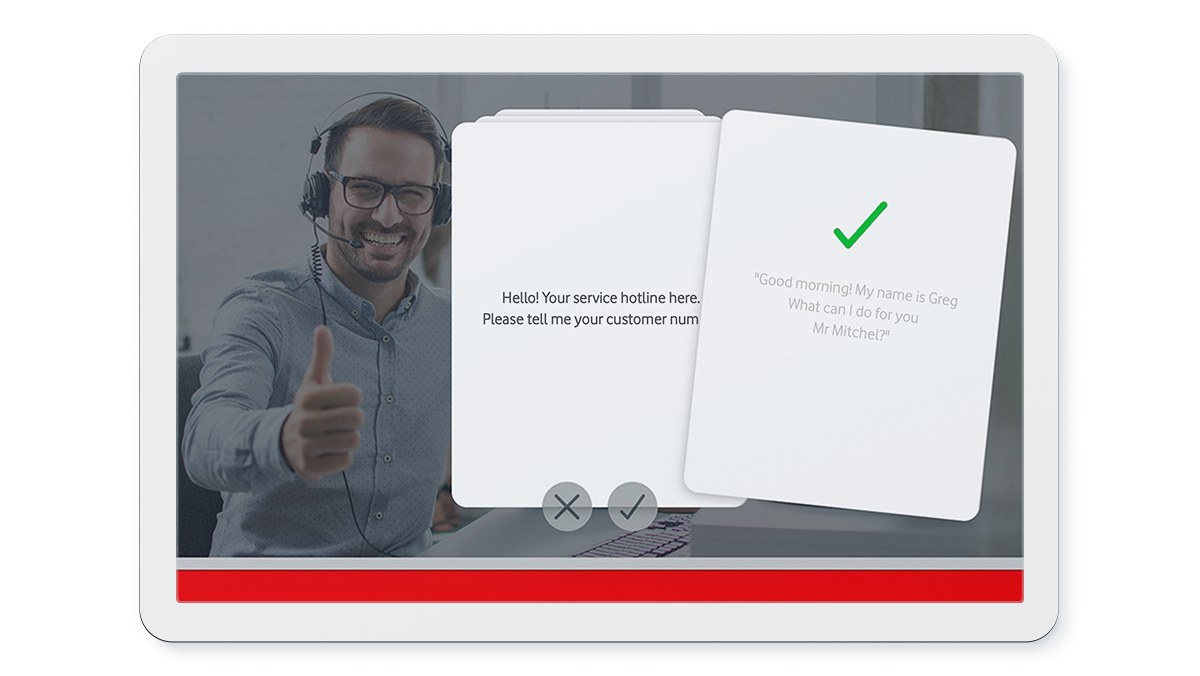
Performance cards
The hands-on workshop moderated by the trainers gives the employees an opportunity to apply what they learned and clarify any questions or uncertainties. This could include polls, multiple choice questions in the group chat or whiteboards.
The online quiz concludes the day. One great example is the BizQuiz. It provides participants with feedback on their learning progress and gives them the opportunity to close any knowledge gaps.
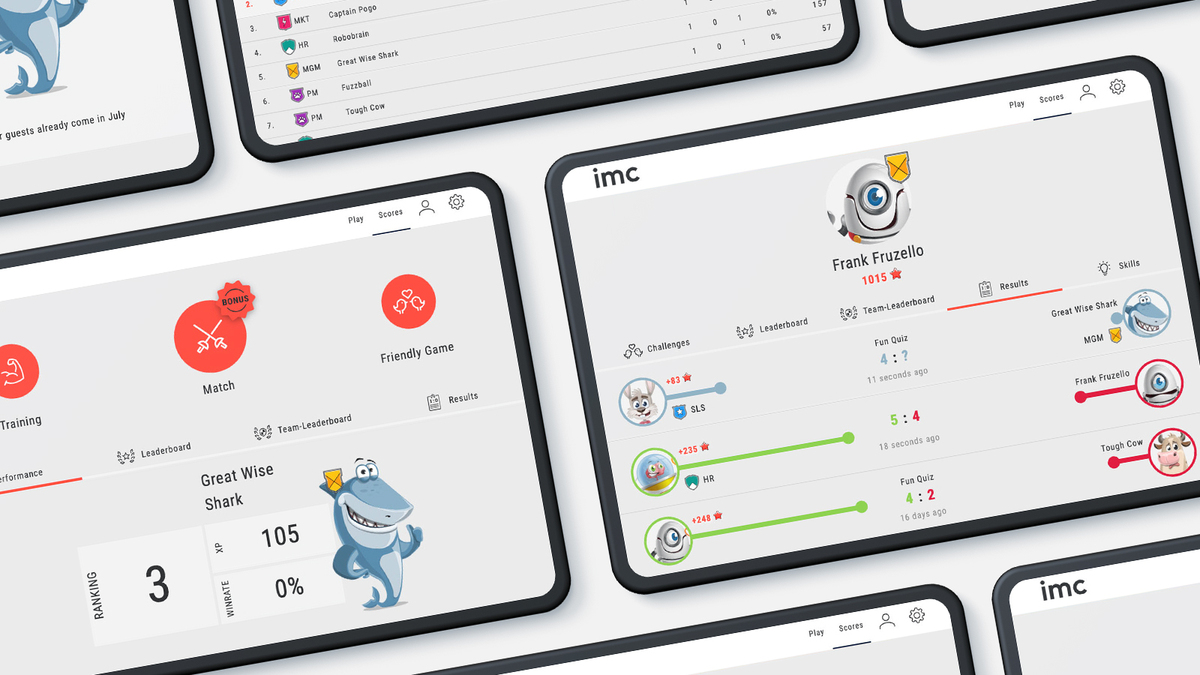
quiz app: Biz Quiz
Finally, the learner makes their personal entry in the learning diary. An easy way to integrate the diary is to design a page in the intranet, a document in the cloud or a form that mirrors the central starting point, and which each participant completes for themselves. This serves to summarise the core messages from the workshops or formulate the questions and tasks for the self-learning phase, as well as compiling key insights from the training courses. The personal learning diary thus becomes an individual reference resource participants can look things up in long after their onboarding.

Learning diary
GOOD TO KNOW
Time investment for trainers is automatically reduced
The targeted use of digital learning formats in the self-learning phase reduces time investment for trainers during digital onboarding. That saves costs and resources. Following this 6-module approach, trainers are only required for the kick-off and the workshop phase.
Digital vs hybrid onboarding
Digital onboarding works. This approach can absolutely be appropriate while also saving resources. Nevertheless, some onboarding processes are easier to realise in a hybrid format. Of course, that does require new employees to travel to the location.
One example for a good hybrid solution would be to communicate theoretical content through online self-study, and then bring participants on site to carry out specific actions, such as operating machinery. The face-to-face part of the training can then be utilised for practical exercises and to clarify questions.
Similarly, a dual approach helps with understanding the corporate culture. For instance, companies might invite new employees for an intro day before their first day of work. Make the most of this day by asking colleagues to talk about how they realise the values, objectives, and mission of the company in their daily work. This meeting can also be leveraged to establish an emotional connection with new recruits and build enthusiasm for the company.
In our experts’ experience, it is not as clear-cut as one approach being universally better. Rather, it is about selecting suitable formats and linking them in a helpful way based on the new employees’ needs and the learning objectives.
We linked a special treat for anyone interested in hybrid onboarding:

Digital Learning Journey
Reaching the destination with the right blend of formats: Digital learning journeys capitalise on the strengths of each learning format to create a motivating learning experience.

LMS Hot Topics: Science fiction or near future?
Onboarding can already be integrated into existing learning management systems. But Hanna's example shows that this is only the beginning.

Contact person
I joined the imc newsroom team in 2021. As a journalist my heart beats for content and storytelling.
I’m excited to figure out how e-learing and digitization affect the future of work. My task is to create content to talk about and I’m always looking for trends.
Privately I love to travel and eat Tapas.
Topics: E-Learning Trends, Corporate Social Responsibility, Press and Influencer Relations

Five basic guidelines for virtual classrooms
Digital teaching is here to stay. Teaching in the virtual classroom and the use of digital tools will still be part of everyday school life after the pandemic. There are a few rules to follow in order to teach and learn successfully online.
Virtual classrooms enable digital teaching and collaborative learning. Digital teaching is not only a great alternative to traditional teaching, it can also be used to complement face-to-face teaching.
But online learning is not the same as face-to-face teaching. One should know that
- the concentration span of children between 12 and 16 years of age decreases after about 30 minutes
- a lack of interaction and concentrated work on the screen leads to faster fatigue.
Virtual lessons, especially long lessons, are a real challenge for children. It is therefore important to make the lessons varied and engaging and to include short breaks.
We have summarised the five most important tips for successful digital teaching for you in an infographic, which you can also download free of charge at the very bottom.

Infographik of the Month: Five basic guidelines for virtual classrooms
Download and further information
The info graphic you can download for free as PDF.
![[E-Learning Punk] Virtual Classroom Preview](https://images.im-c.com/wp-content/uploads/2020/06/imc_image_elearningpunk_virtualclassroom_thumbnail_2020_06_05.jpg)
Let blackboard and teacher's desk shine in new splendour
Find out how a virtual classroom works, what you should pay attention to and which providers offer virtual classrooms software.

Dr. Fabian Kempf: The specialist for virtual classrooms
Dr. Fabian Kempf, CEO of Vitero, reveals his tips for more opulence and glamour in the virtual classroom in the E-Learning Punk interview.
Contact person
I have been working in the Marketing & Communication Team at imc since March 2019.
Communication, creative content and social media are my passion. "KISS - Keep it short and simple" is my credo.
To explain complex content in an understandable way and thus make the topic of e-Learning accessible to everyone is an exciting challenge every day.
Privately I love to read, play poker and travel a lot.
I am always happy to receive feedback or suggestions.

